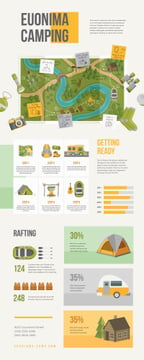If you camp consistently in locations with rocks or sharp downed branches or simply despise packing away a damp, muddy tent, after that a footprint is certainly worth considering. Footprints are additionally reasonably affordable contrasted to a brand-new camping tent.
Are you safe from lightning in a tent?
Many tent suppliers offer their very own certain impacts, which are cut to the precise size of the camping tent floor. However, you can make one yourself with a light-weight fabric like polycryo or tyvek.
Weather Conditions
Whether you need a footprint actually depends upon the conditions you'll be camping in. If you're backpacking in a place where the ground is typically wet (it's pretty much unpreventable), an outdoor tents footprint can be a helpful enhancement to your kit, as it will stop your camping tent floor from ending up being soggy.
However, if the impact is too large it can serve as a moisture catch and possibly enable water to swimming pool under your camping tent. This can be avoided by making sure the impact is cut a little bit smaller sized than your tent on all sides.
Generally talking, it's ideal to get an impact from the exact same manufacturer as your tent to ensure an exact fit. They additionally have a tendency to be made from thicker, extra resilient materials than do it yourself options. They can be expensive for something whose single purpose is to safeguard the ground beneath your outdoor tents, however it can be a beneficial investment if you respect the long life of your equipment.
Terrain
Many high quality tents can function well without an impact, specifically those that have bath tub floors constructed from resilient products. However, the terrain you trek on can have a significant influence on exactly how quickly your tent flooring wears. Granite slabs, sandstone and various other sturdy surfaces put on with all-time low of your tent faster than verdant fields or forest floorings.
A footprint or ground cloth aids prolong the life of your outdoor tents by acting as a barrier luxury camping equipment between the ground and the sewn-in groundsheet of your camping tent, says REI elderly sales professional Elizabeth Nguyen. It additionally shields the tent from abrasive elements like sharp twigs and jagged rocks that could penetrate or tear the sewn-in flooring. When selecting an impact for your outdoor tents, it is very important to ensure it's somewhat smaller than the tent on all sides. This avoids water from merging between the tent and impact throughout a rainstorm, which could leak into your camping tent. The most effective choice for an impact is to buy one made for your certain tent, which will certainly assure a snug fit.
Outdoors Tents with Lower Deniers and Water-proof Scores
Whether you're a laid-back backpacker or a hardcore traveler, the durability level of your tent is an important consideration. Camping tents designed to be ultralight, verging on minimalist, commonly trade off some degree of longevity in the fabric and products made use of.
One textile spec you'll encounter is denier, which refers to the weight in grams of a 9,000-meter length of yarn that makes up the camping tent's canopy, rainfly, and/or floor. A greater denier specification indicates more sturdy fabrics, while lower numbers suggest lighter and less durable fabrics.
Other specs to consider consist of flooring measurements, vestibule size, and interior pockets. The former shows the overall square-footage that can be used for habitable area, while the latter can contribute in storage by supplying a location to stow away equipment over night and in bad climate. Air flow is likewise a critical factor; as you breathe out moisture throughout rest, it needs to run away, or condensation might develop inside. Attributes such as mesh windows and panels and flexible rainfly doors assist boost ventilation and avoid this from taking place.
The Expense
The expense of an outdoor tents can affect its efficiency, and it is additionally essential to consider how much you can pay for to spend. Backpackers looking for a light-weight shelter must go for an outdoor tents with a livability rating of a minimum of 2 stars, and ideally, three or more.
Livability describes how roomy a camping tent really feels, with headroom and floor dimensions playing a large role. Historically, backpacking camping tents utilized considerably sloped walls and very little space to save weight, however modern materials enable developers to give even more comfort while maintaining weight low.
Storage space is another element to take into consideration, with vestibules and a quick-pitching layout helping in reducing arrangement time. Additionally, the type of textile finishing and how the outdoor tents is kept can influence durability. For instance, a PU finish that breaks down quicker when damp, or undergoes duplicated cycles of storing and un-stowing, can significantly shorten the lifespan of a camping tent. Similarly, making use of a customized footprint instead of packing an outdoor tents in a careless fashion will certainly also prolong its life expectancy.
Do canvas tents hold heat?
